When: Friday 10 February, 2012 (2-4pm)
What We Did: This week we got to explore the local dinosaur exhibit. Here's a tour of what we saw! (Asterisks denote different genera seen.)

*Nannotyrannus . This specimen is interesting because there is much debate on whether it is a new species of dinosaur or a juvenile Tyrannosaurus rex. It is similar to Tyrannosaurus in that they are both members of Saurischia. The pelvis is the key indicator; the pubis extends anteriorly, like the Tyrannosaurus and other Saurischians. Another characteristic shared between Saurischia and this specimen is the second digit being the dominant and longest digit.


*Triceratops horridis. This is a classic example of an Orinthischian dinosaur. The Orinthischia are known as “the bird-hipped dinosaurs”. The tell-tale sign of an Ornithischian animal is a pubis posterior in the pelvic girdle. Other characteristics demonstrated in this species (and Ornithischia) include: the antorbital fenestra is slightly reduced; the ventral margin of the antorbital fenestra aligns with the maxillary teeth; a beak-like premaxilla without teeth; largest teeth in the middle of the maxilla; no gastralia; digit 5 reduced to a metatarsal with no phalanges; and at least five sacral vertebrae.



*Tyrannosaurus rex. This dinosaur is a Saurischian. The photograph of the pelvic girdle demonstrates this nicely, illustrating the classic three-prong pelvis. The pubis extends anteriorly and dorsally, as seen in the photograph. Another identifying characteristic is the dominant second digit of the manus.


These photographs are of early mammals. The pelvic girdles are very wide and do not have a protruding pubis (seen especially in the second picture). The most obvious sign that these are mammals are the modified synapsid skulls with only one bone in the lower jaw. The synapsid skull contains only a subtemporal fenestra. In these two specimens, the fenestra has been derived into the zygomatic arch, which all mammals (including humans) have today.

*Diatryma - an extinct bird. The pelvis here is a good illustration of a typical bird pelvis with the ilium contacting the sacral vertebra.



*Corythosaurus, Parasaurolophus, and Edmontosaurus - lack the antorbital fenestrae. This means that they are probably derived members of the Ornithischia, since a reduced antorbital fenestra is a synapomorphy for this group. Edmontosaurus has very large, open nasal capsules. The diapsid conditions of these skulls are easily visible.
Many dinosaurs had very extensive limbs, particularly hindlimbs (think of Tyrannosaurus rex) that aided in holding the body high above the ground. While the femurs on some reptiles face out away from the body, the femurs of dinosaurs are longitudinal and face down.
*Tyrannosarus rex - view of hindlimbs and pelvic girdle. Notice how high the ribs are!
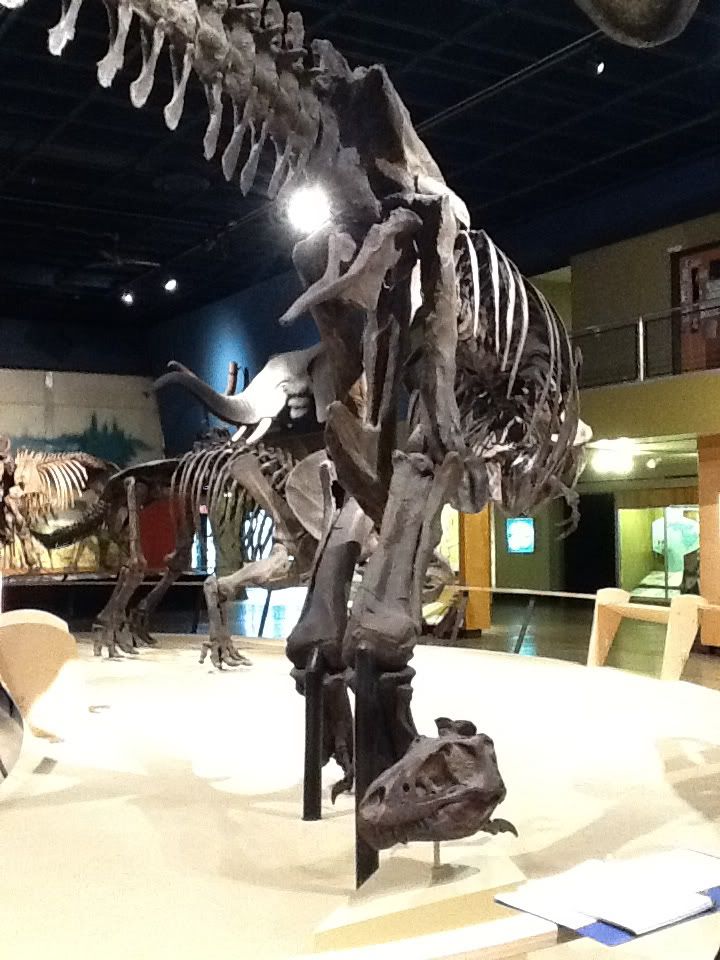
*Haplocanthosaurus delfsi
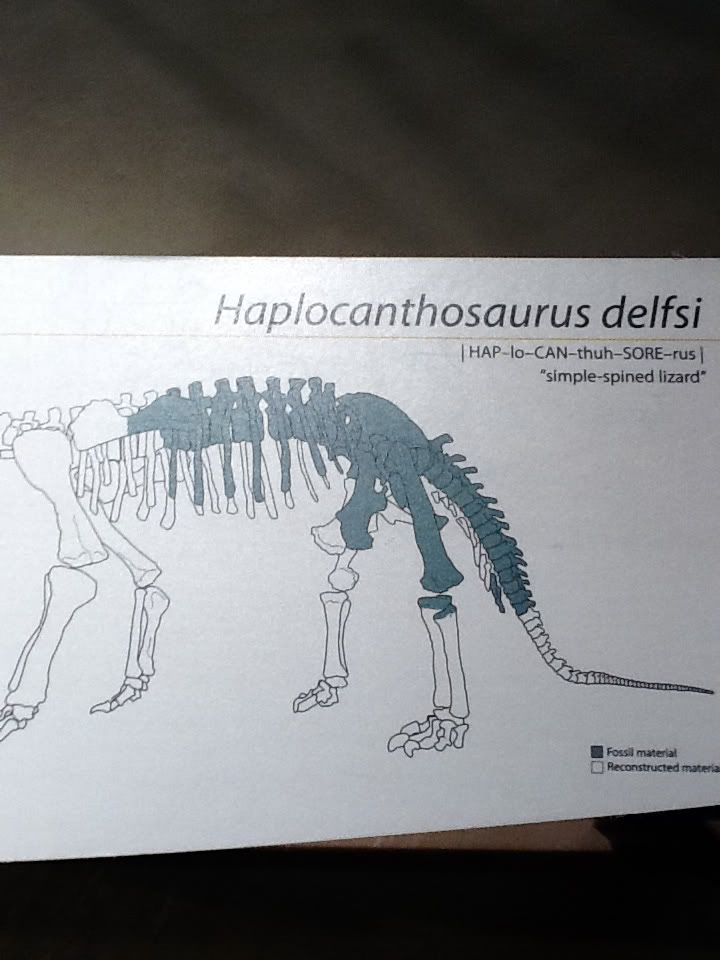

Here is a view of H. delfsi looking down to the caudal region. Notice how wide the stance of this animal was.

Haplocanthosaurus pectoral girdle - you can see the pubis (between femurs) facing anteriorly, making this a Saurischian dinosaur.
*Allosaurus fragilis - the pelvic girdle makes it a Saurischian dinosaur since the pubis is anterior to the ischium; the two bones create an angle of about 60°.
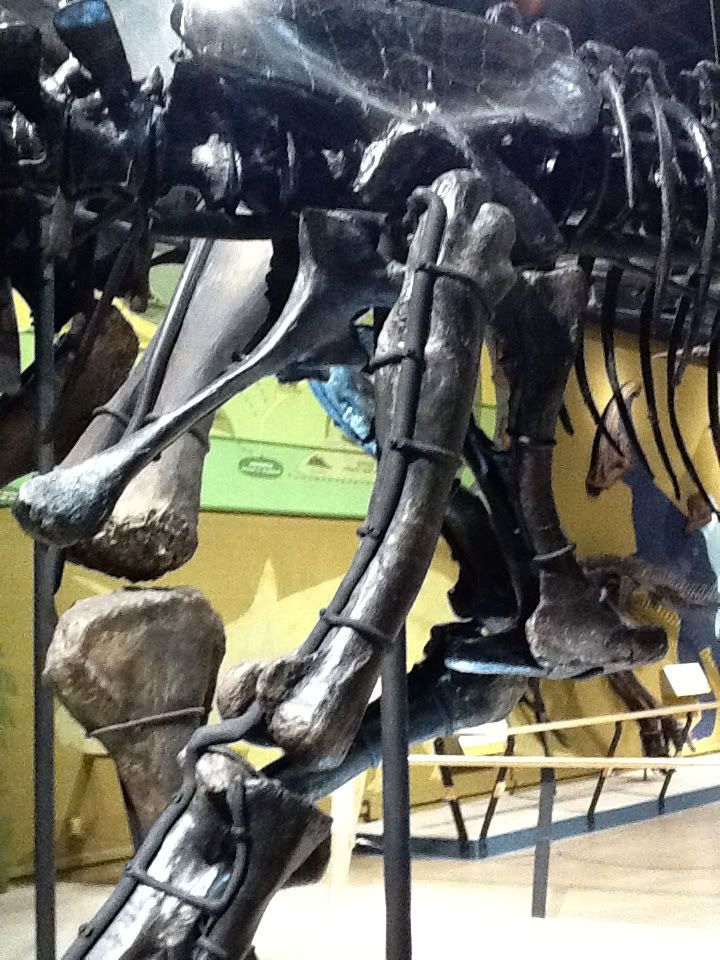
Allosaurus pectoral girdle - between the femur you can easily distinguish the pubis from the ischium.
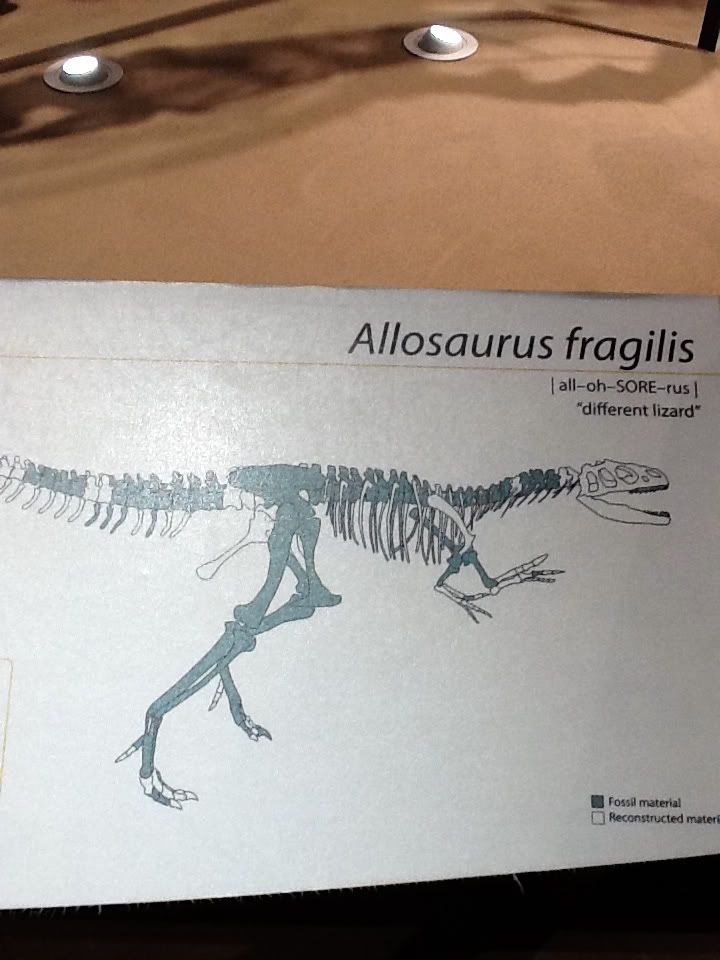
*Coelophysis - (description below taken from Cleveland Museum of Natural History sign)
“Coelophysis is one of the earliest known meat-eating dinosaurs. This animal was an active and nimble predator with slender hind legs, a long counterbalancing tail, and pointed head with sharp, serrated teeth. Coelophysis may have preyed upon lizards, insects, and small plant-eating dinosaurs.”
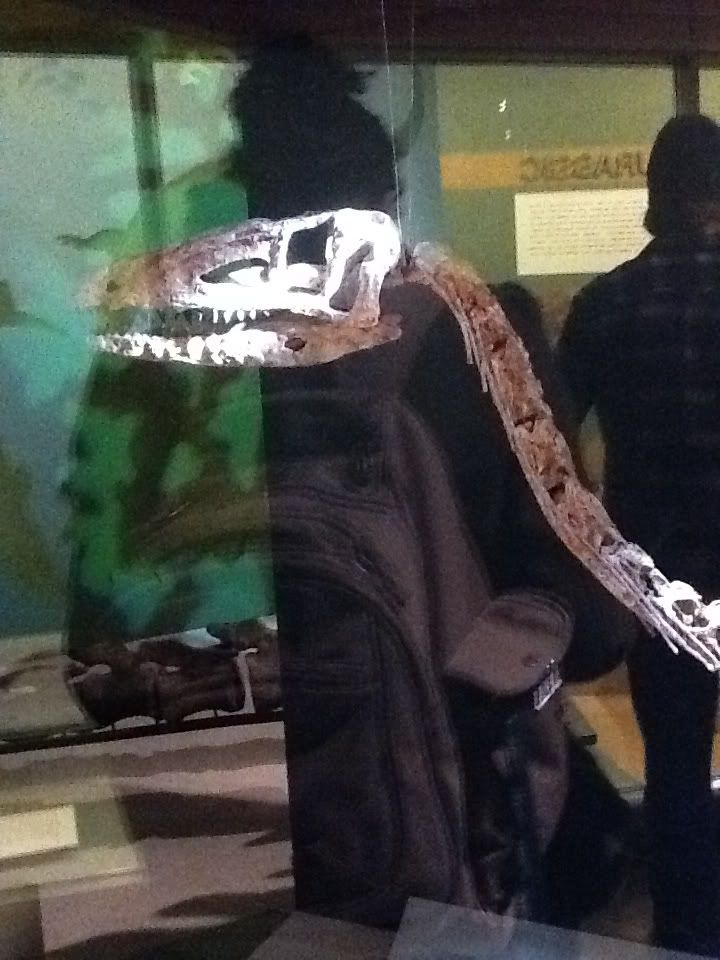
Coelophysis skull - The four holes you see in the skull (anterior to posterior) are: nasal, orbital, temporal fenestrae. This species is a modified diapsid as there is no definitive fenestra superior to another (i.e., there is no clear distinction between supratemporal and subtemporal fenestrae).
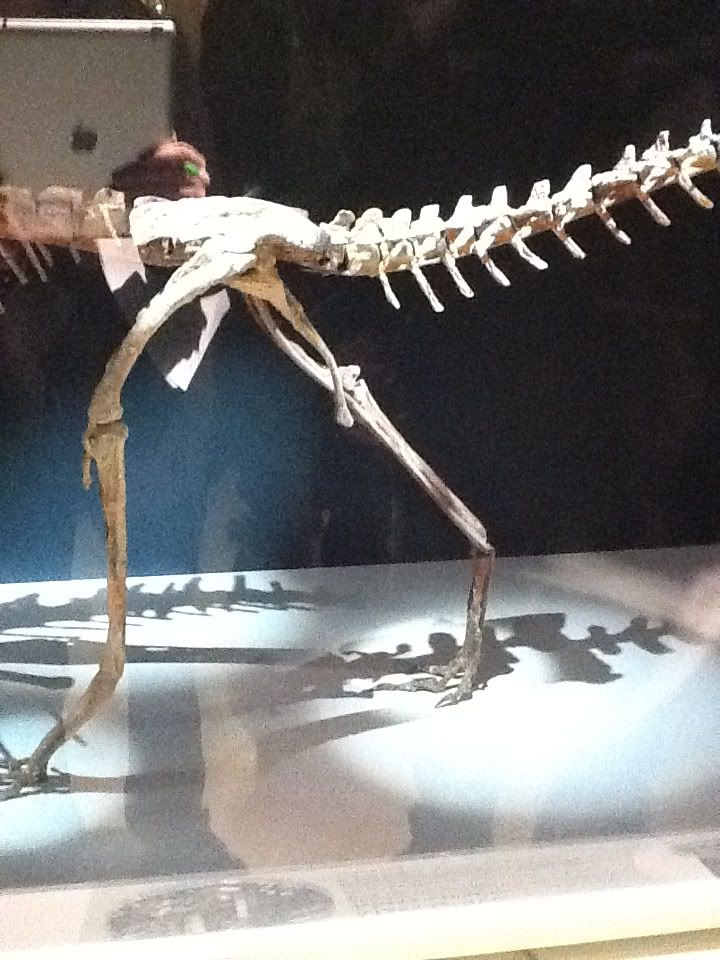

The two pictures above clearly show the relatively large angle between the pubis and ischium of Coelophysis, making it Saurischian.
*Phytosaurus (large crocodilian) - this organism displays the diapsid condition with a large supratemporal and subtemporal fenestra.

*Stenopterygius (Plesiosaur) - it is difficult to see fenestrae on this fossil, but since it is a Plesiosaur it is a Sauropterygian, belonging to the clade Euryapsida and having a euryapsid skull. Thus, this fossil is NOT a dinosaur since it is not an Archosaur.

*Ichthyosaurus (Icthyosaur) - definite supratemporal fenestra, but from this fossil it's difficult to tell if it displays diapsid or euryapsid fenestration. However, we know from other fossil and lineage evidence that Ichthyosaurs are euryapsid (a derived diapsid condition). Since this specimen is an Ichthyosaur, and thus a member of Euryapsida, it is NOT a dinosaur since dinosaurs belong to Archosauria.
*Dimetrodon limbatus - the sole fenestra is directly posterior to the orbit. It is not diapsid as there is only one fenestra. The fenestra is subtemporal, halfway between the orbit and posterior end of the upper jaw, making it a true synapsid. Thus, it is not a dinosaur but is an extremely primitive mammal.
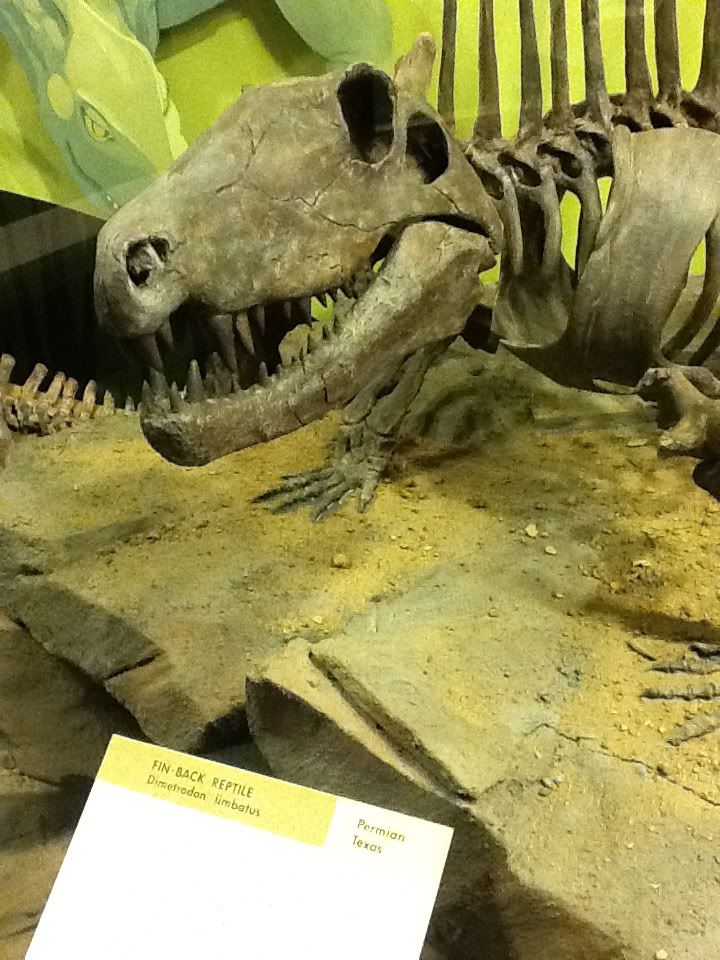
*Sphenodon punctatus (tuatara) - extant species with origins dating back to the Late Triassic (~210 million years ago). Although there was no skeleton available, the Sphenodontida are diapsids with clear supra- and subtemporal fenestration. Interesting fact: these lizards do not have a tympanum (eardrum), but use the quadrate bone (rear of jaw) to pick up vibrations instead.
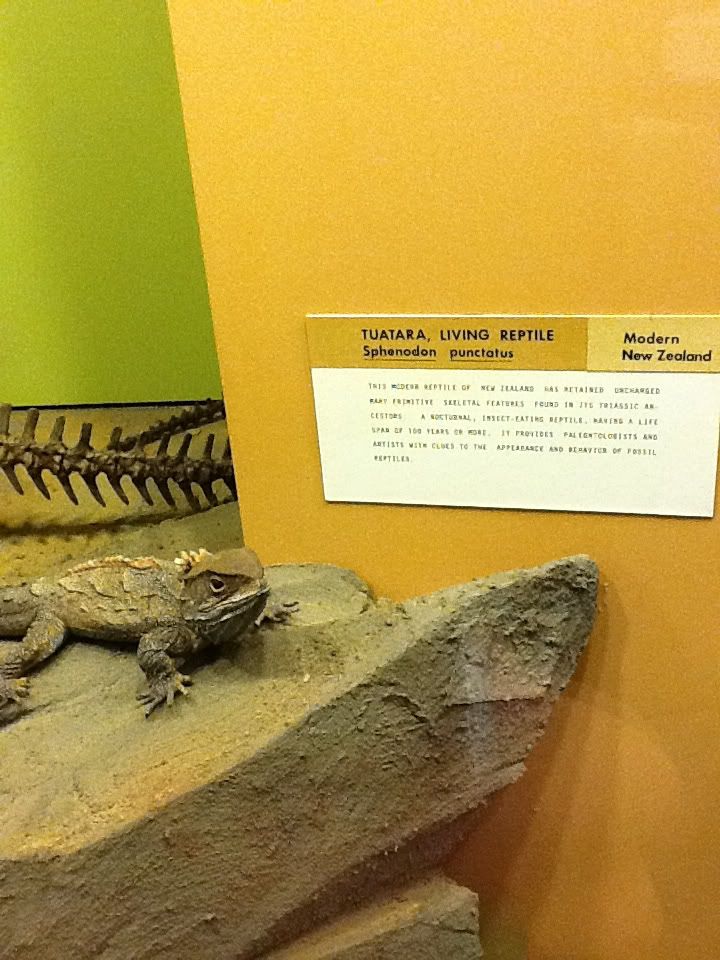
Taken from the Cleveland Museum of Natural History sign: “This modern reptile of New Zealand has retained unchanged many primitive skeletal features found in its Triassic ancestors. A nocturnal, insect-eating reptile, having a life span of 100 years or more. It provides paleontologists and artists with clues to the appearance and behavior of fossil reptiles.”
No comments:
Post a Comment